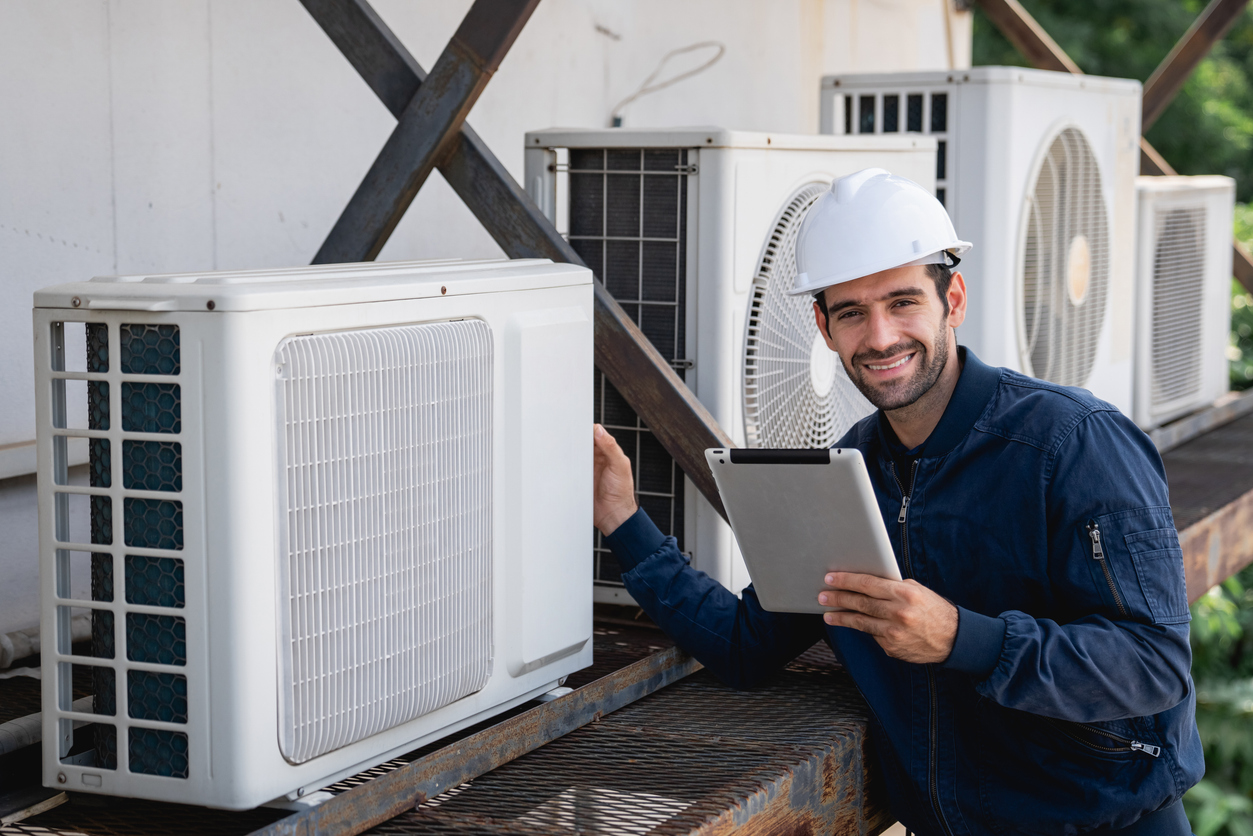
Summers in Richmond, VA, are hot and humid. Daytime temperatures often climb as high as 90 degrees Fahrenheit, and without fixed climate-control systems, building interiors become muggy and oppressive. Air conditioners play vital roles in keeping locals comfortable and safe. They use highly efficient refrigerants to transfer indoor heat and humidity outdoors. Commonly referred to as heat exchange, an air conditioner’s cooling process relies heavily on an AC heat exchanger. Read on to learn what AC heat exchangers are, how they work, and why they’re vital for air conditioning.
If you use a furnace for winter heating, you’re probably familiar with the heat exchanger concept. The basic function of a heat exchanger is to move heat from one medium to another. In furnaces, heat exchangers convert hot combustion gases into usable heat energy. In air conditioners, they transfer heat outside by using refrigerant as a medium. The primary heat exchangers in your AC are its evaporator coil and its condenser coil.
Often referred to as the “lifeblood” of the cooling process, AC refrigerant cycles between your air conditioner’s indoor air handling unit and its outdoor condenser.
At the start of a cooling cycle, the refrigerant travels to the air handler as an ice-cold liquid. This liquid fills your AC’s indoor evaporator coil. Your air conditioner draws warm, indoor air in and moves over this coil. The cold refrigerant extracts the air’s heat as it passes.
Heat extraction in the evaporator coil warms refrigerant and turns it into a high-pressure gas. This vapor gas moves onto the outside condenser unit, where it sheds heat at the condenser coil.
Vapor moisture condenses as this gas compresses and travels to your air conditioner’s condensate drain. This is how air conditioners also moderate indoor humidity. Having shed both moisture and heat, the cold refrigerant travels to the indoor evaporator coil as a liquid to start the cooling process again.
Have you ever turned your air conditioner on and only received lukewarm air from your HVAC vents? If you set your thermostat to “FAN” instead of “AUTO,” the blower motor will cycle room temperature throughout your home. Although air circulation might create a noticeable breeze, it won’t lower your indoor temperature or impact excess indoor humidity. This is also true of ceiling fans and standing fans. Under the right conditions, fans can create cooling breezes, but they only move air rather than lower its temperature. Heat exchangers make air conditioners effective for cooling and humidity control in ways that fans are not.
Heat exchangers route excess moisture and heat out of homes. Heat exchangers allow air conditioners to lower indoor temperatures by several degrees with each cooling cycle. Dry air feels cooler than humid air, so the humidity reduction provided by heat exchangers enhances comfort and makes conditions more enjoyable.
Well-maintained AC heat exchangers promote cooling system efficiency. With regular maintenance, your air conditioner will use less energy to create and maintain the temperature that you’ve set at your thermostat. For instance, if you skip annual AC maintenance, build-ups of dust and other debris on your evaporator coil will prevent cold refrigerant from absorbing heat. This will result in longer and less productive cooling cycles. It can also cause the evaporator coil to freeze or lead to short cycling of your air conditioner.
Dirty condenser coils and blocked condenser units inhibit the release of heat. Insufficient heat release can cause air conditioners to overheat, leading to warm or even hot air coming from your vents. To prevent overheating and shutdown, homeowners should schedule professional AC maintenance once each year and maintain at least 24 inches of clearance around the condensers.
Poor AC maintenance can additionally impact humidity removal. For example, if your air conditioner hasn’t been professionally maintained for a while, algae and biofilm may have built up along the condensate drain line. These buildups block the escape of condensation and can cause condensate drain pan overflows. They can also leave homes feeling clammy or muggy.
Clean heat exchangers help air conditioners last longer compared to poorly maintained units. Transferring heat with dirty evaporator coils requires more energy and work and causes more stress and overall wear. Making sure that your AC heat exchangers are working efficiently will reduce strain on other system components and reduce your risk of costly breakdowns and repairs.
Heat exchangers can raise or lower your indoor air quality (IAQ). When properly cleaned and maintained, heat exchangers enhance indoor air quality by controlling humidity and preventing mold and mildew. Dirty heat exchangers can increase indoor humidity, creating an environment that promotes the growth of mold, mildew, and other harmful pathogens.
Like all other AC components, heat exchangers can develop problems over time.
To prevent these other issues and ensure optimum AC performance, you must perform regular maintenance:
Now that you understand the role of your AC’s heat exchanger, you can appreciate how it keeps your home cool. Routine maintenance keeps AC heat exchangers functioning as they should, extends the lifespans of air conditioners, promotes cooling system efficiency, and boosts IAQ. If you have concerns about the AC heat exchanger in your Richmond, VA, home, contact Capital City Comfort Solutions today!